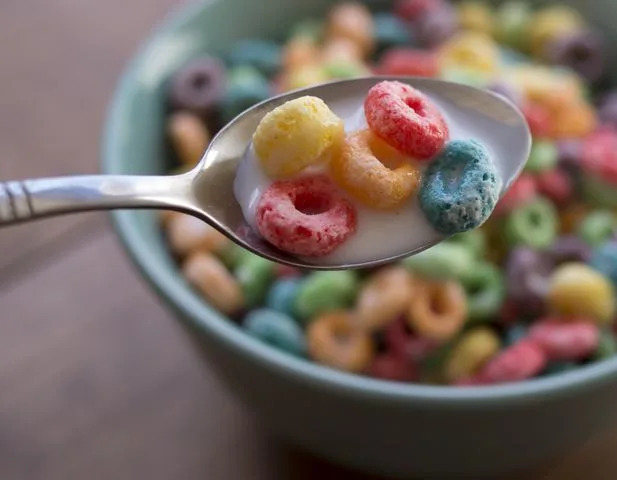Some Artificial Dyes Could Be Banned From California Schools—Here’s Why
Fact checked by Nick BlackmerFact checked by Nick Blackmer
- California legislators have passed a bill that would prohibit public schools from offering food that contains six types of artificial dyes.
- The bill, which now goes to the governor to sign, specifically bans green dye No. 3, red dye No. 40, yellow dyes Nos. 5 and 6, and blue dyes Nos. 1 and 2.
- The FDA has approved these dyes, but researchers say that studies have linked them with behavioral problems in children.
California may soon ban the sale of certain artificial food dyes in schools. State legislators have passed a bill called the California School Food Safety Act, which would make it illegal for public schools to offer food to children that contains six different artificial dyes.
The bill now goes to California’s governor, Gavin Newsom, who has until the end of the month to decide whether to sign it.
The introduction and passage of the legislation raise questions about the safety of food dyes and why the state is even considering banning some of them. Here’s what you need to know about these dyes.

What Does the Bill Ban?
Assembly Bill 2316 prohibits California public schools, which includes charter schools, from offering kids in grades kindergarten through 12th any food or drink that contains green dye No. 3, red dye No. 40, yellow dyes Nos. 5 and 6, and blue dyes Nos. 1 and 2. These dyes typically appear in processed foods like candy, drinks targeted at kids, certain ice creams, and select cereals.
The bill also states that elementary-aged children may only be sold fruits, vegetables, dairy, protein, or whole grain-rich items; foods with a fruit, vegetable, dairy, protein, or whole grain item as its first ingredient; or combination foods containing at least one-quarter cup of fruit or vegetables and meeting a slew of standards.
If passed, the law would go into effect on December 31, 2027.
The Consumer Brands Association opposes the legislation, saying in a statement that the bill “usurps the comprehensive food safety and approval system for these colorings, would limit the availability of wholesome and healthy foods, and eliminates common opportunities for fundraising for sports teams and student clubs.”
Last year, Newsom signed the California Food Safety Act, which will ban the sale in the state of foods that contain brominated vegetable oil, potassium bromate, propylparaben, or red dye 3.
What Does Research Show About How the Dyes Affect Kids?
Concerns about the effects of dyes on kids began in the 1970s with anecdotal observations, Emily S. Barrett, PhD, researcher and deputy director of the Rutgers Center for Environmental Exposures and Disease, told Health.
Since then, some studies have found a link between the dyes and behavioral issues. “These include ADHD, inattentiveness, hyperactivity, and restlessness,” Barrett said.
“Over the subsequent decades, numerous studies were done in lab settings to test this hypothesis, and overall, those studies point to poorer behavior after consuming food and drink containing food dyes vs. placebos,” Barrett said. “While questions still remain, the consistency of the findings is notable.”
Asa Bradman, PhD, a public health researcher and department chair of Public Health at the University of California, Merced, told Health that “there are a number of studies that tend to suggest that, especially in children who already have behavioral challenges like ADHD, there are changes in their behavior when they’re exposed to these dyes.”
Bradman worked with California state investigators on a 2021 report that helped back the latest bill. The report, published by the California Office of Environmental Health Hazard Assessment, analyzed data from studies conducted on humans and animals exposed to artificial food dyes.
According to Bradman, it’s especially significant that the state’s analysis factored in “challenge studies,” in which children were given a cocktail of dyes and, in some cases, a single dye, to see how it affected them. “There are always limitations to these kinds of research, and oftentimes you’ll hear about a study suggesting an association but not causation,” he said. “But we actually had challenge studies that showed behavioral changes in these kids.”
The researchers discovered that 16 of the 25 studies analyzed revealed a link between the dyes and bad behavior in kids. The association was considered statistically significant in 52% of those studies.
“While questions still remain, the consistency of the findings is notable,” Barrett said.
It’s important to point out that the dyes have the approval of the Food and Drug Administration (FDA) and are offered in what the FDA considers acceptable daily intake levels, meaning amounts consumed daily over a lifetime without harming health. But the growing body of research has caused some people to question current guidelines, Bradman said.
When asked for comment, an FDA spokesperson told Health that the agency is aware of the bill. “The FDA has reviewed the research on the effects of color additives on children’s behavior, including the literature review cited by the bill,” they said in a statement. “The totality of scientific evidence shows that most children have no adverse effects when consuming foods containing color additives, but some evidence suggests that certain children may be sensitive to them.”
As a result, the spokesperson said that the FDA “will continue to assess the emerging science and ensure the safety of approved color additives.”
What About the Impact on Adults?
A mouse study published in 2023 linked red dye 40 to DNA damage and colonic inflammation, but research on these dyes has mainly focused on behavioral issues in children.
There are a few reasons for that, Barrett noted. “Children’s brains are still rapidly developing and may be more vulnerable to disruption than the adult brain,” she explained. “Second, children likely consume more food dyes than adults—when you think of brightly-colored packaged foods like candies, juices, and soft drinks, they tend to be marketed to kids and teenagers more than adults.”
Should Kids Avoid These Dyes?
While the bill applies to California schools, researchers recommend being mindful of these dyes regardless of where you live.
“There’s enough evidence to suggest that people should be aware of potential behavior issues after children consume these food dyes,” Barrett said. “Parents may want to check labels or steer their kids away from processed and packaged foods that are more likely to contain dyes.”
Bradman also recommends limiting foods that contain these dyes. “These dyes are part of foods that are not very nutritious,” he said. “The key concept here is moderation. If a child is having it every day, that’s where we want to intervene and have healthier alternatives.”


